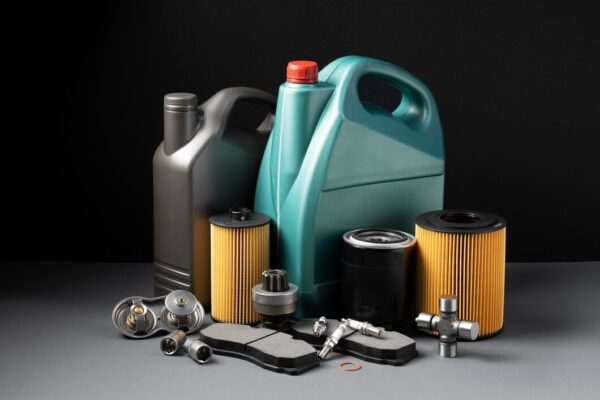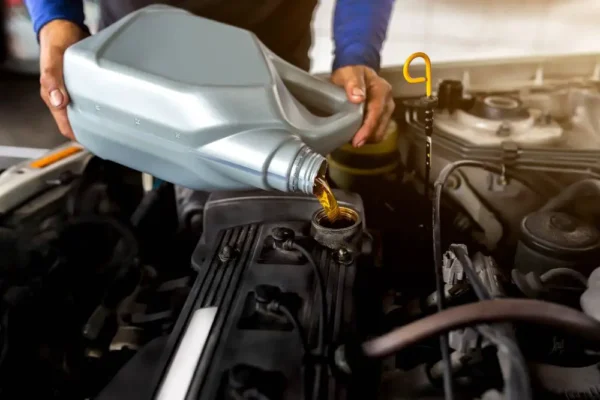In the realm of car maintenance, few tasks are as essential as changing the oil. Properly maintaining your vehicle’s engine oil not only ensures longevity but also contributes to optimal performance. In this comprehensive guide, we, as your trusted automotive companions, will take you through the step-by-step process of changing your car’s oil. Follow these instructions diligently to keep your engine running smoothly.

Gathering the Essentials Tools
Before embarking on this journey, ensure you have the following tools and materials:
Tools:
- Oil filter wrench
- Oil drain pan
- Socket set
- Oil filter drain tool
- Funnel
Materials:
- High-quality motor oil
- Oil filter
- Disposable gloves
- Oil absorbent pads
Step 1: Prepare Your Vehicle
1.1. Park on a Level Surface
Begin by parking your car on a flat and level surface. This ensures proper drainage and accurate oil level readings.
1.2. Gather Safety Gear
Put on your disposable gloves to protect your hands from oil and other contaminants.
Step 2: Locate the Oil Drain Plug
2.1. Refer to Your Car’s Manual
Consult your vehicle’s manual to identify the location of the oil drain plug. Typically, it is situated beneath the engine.
2.2. Position the Oil Drain Pan
Place the oil drain pan beneath the oil drain plug to catch the used oil.
Step 3: Remove the Oil Drain Plug
3.1. Use a Socket Wrench
Utilize a socket wrench to carefully loosen and remove the oil drain plug.
3.2. Let the Oil Drain
Allow the used oil to drain completely into the oil drain pan.
Step 4: Remove and Replace the Oil Filter
4.1. Locate the Oil Filter
Refer to your car manual to find the oil filter’s location.
4.2. Use an Oil Filter Wrench
Employ an oil filter wrench to remove the old filter.
4.3. Apply New Oil to the Gasket
Before installing the new oil filter, apply a small amount of oil to the rubber gasket.
4.4. Install the New Oil Filter
Screw on the new oil filter hand tight. No need for excessive force.

Step 5: Add New Oil
5.1. Position the Funnel
Place a funnel in the oil fill cap.
5.2. Pour in the New Oil
Pour the recommended amount of high-quality motor oil into the engine.
Step 6: Check the Oil Level
6.1. Start the Engine
Turn on your car and let it run for a few minutes.
6.2. Check the Oil Level
Turn off the engine and check the oil level using the dipstick. Top up if necessary.
Congratulations! You’ve successfully changed your car’s oil, contributing to the longevity and efficiency of your vehicle. Regular oil changes are crucial for optimal engine health, and by following this step-by-step guide, you’ve taken a significant stride towards mastering the art of car maintenance.

While some may prefer leaving this task to professionals, changing your car’s oil at home is a cost-effective maintenance solution. With the right tools and a bit of know-how, you can perform this routine task and keep your car running smoothly without breaking the bank.
Importance of Regular Oil Changes
Regular oil changes are crucial for maintaining the health of your vehicle’s engine. Fresh oil lubricates the engine’s moving parts, reducing friction and preventing wear and tear. Neglecting oil changes can lead to decreased performance, increased fuel consumption, and even engine damage.
Common Mistakes to Avoid
In the world of oil changes, blunders happen. We’ll highlight common mistakes and their potential consequences, steering you away from pitfalls that could harm your engine.
Choosing the Right Oil
Not all oils are created equal. Synthetic, conventional, high mileage – the options can be overwhelming. We’ll guide you through the oil aisle, helping you choose the right one for your car’s needs.
Why Regular Oil Changes Matter
Your car’s engine is a symphony of moving parts, and oil acts as the conductor, ensuring each component works harmoniously. Clean oil is essential for optimal engine function, reducing friction and preventing wear and tear. The result? Improved performance and a longer-lasting engine.
Finally DIY vs. Professional Oil Changes
To change or not to change – that is the question. We’ll weigh the pros and cons of DIY oil changes versus seeking professional services. DIY can be cost-effective, but safety considerations and the allure of professional expertise may tilt the scales.
